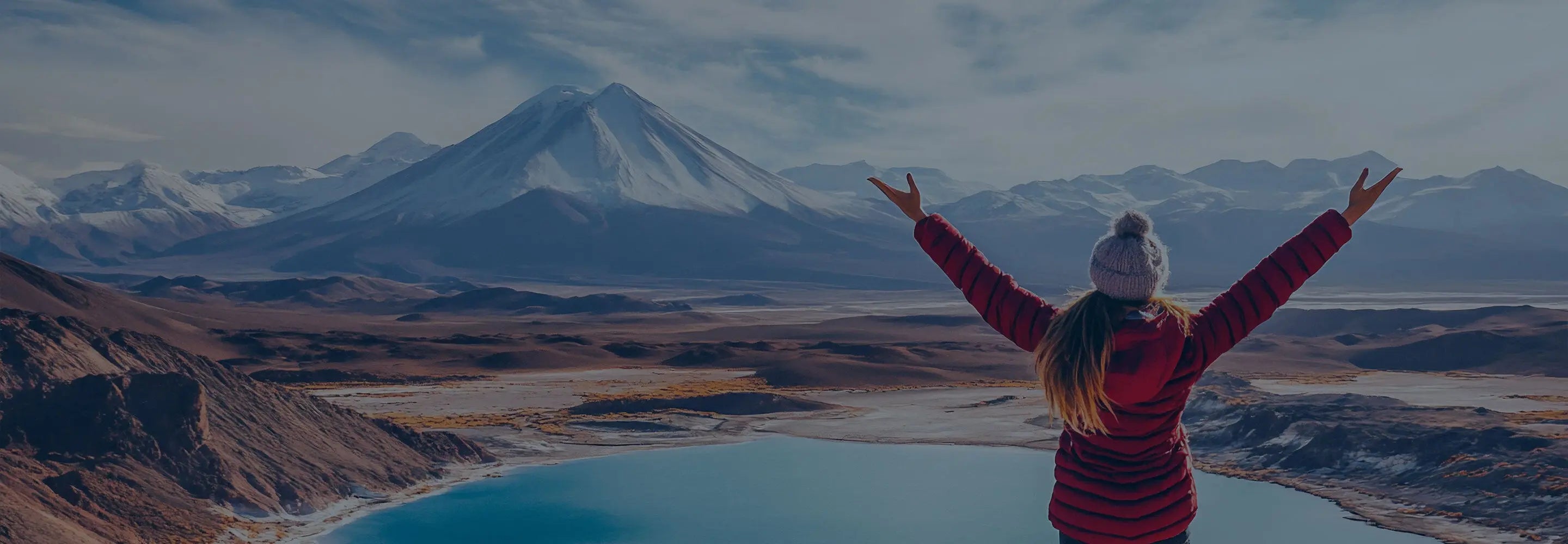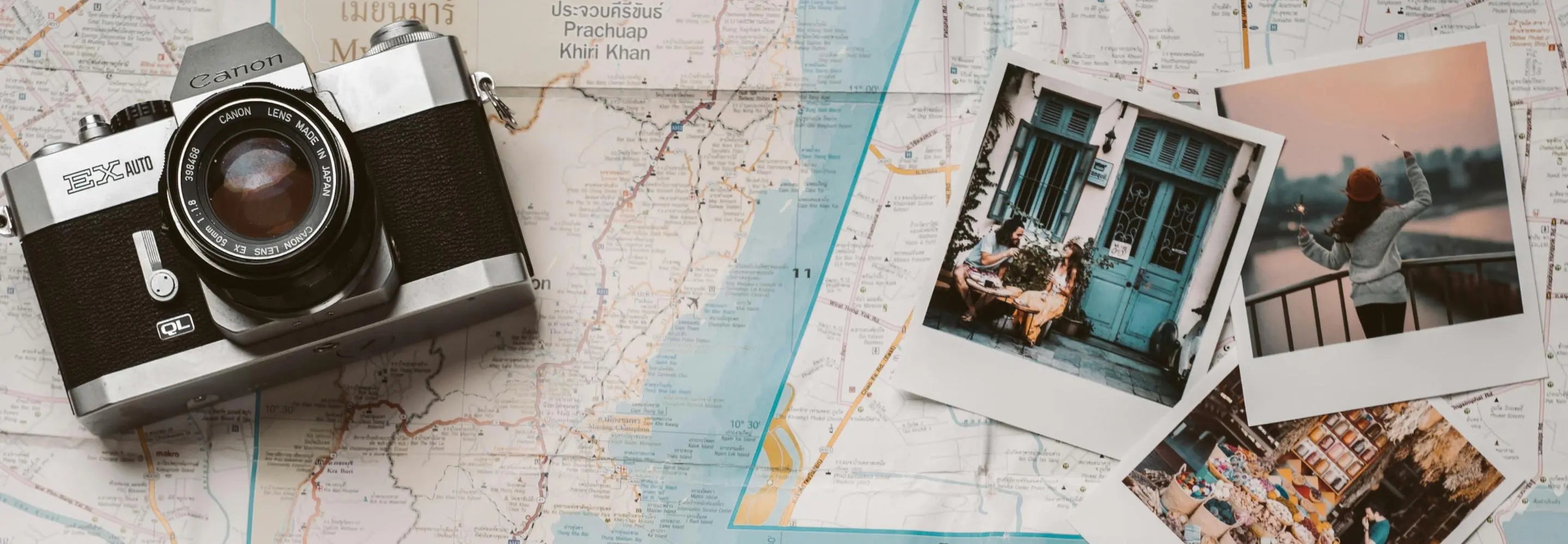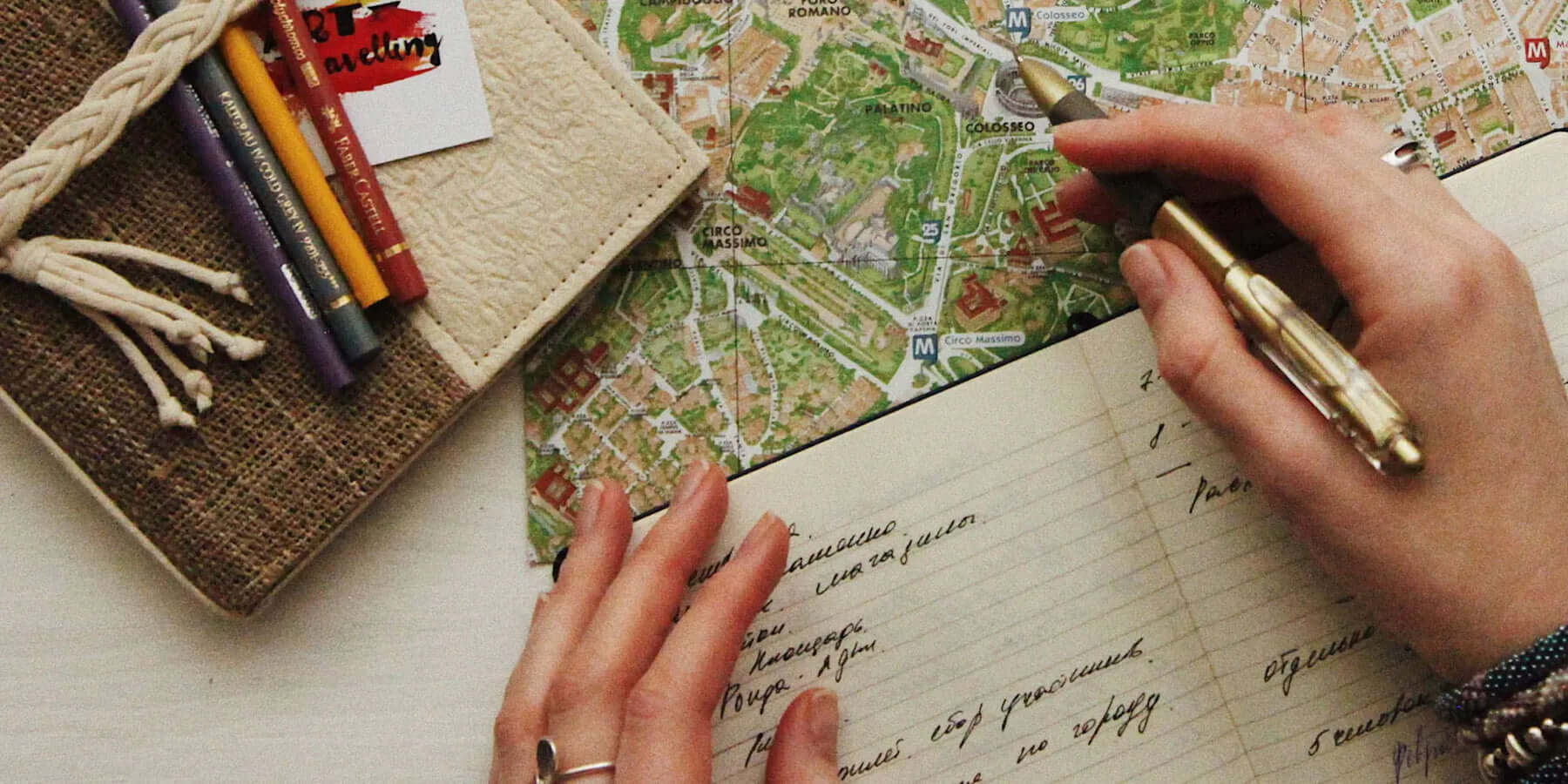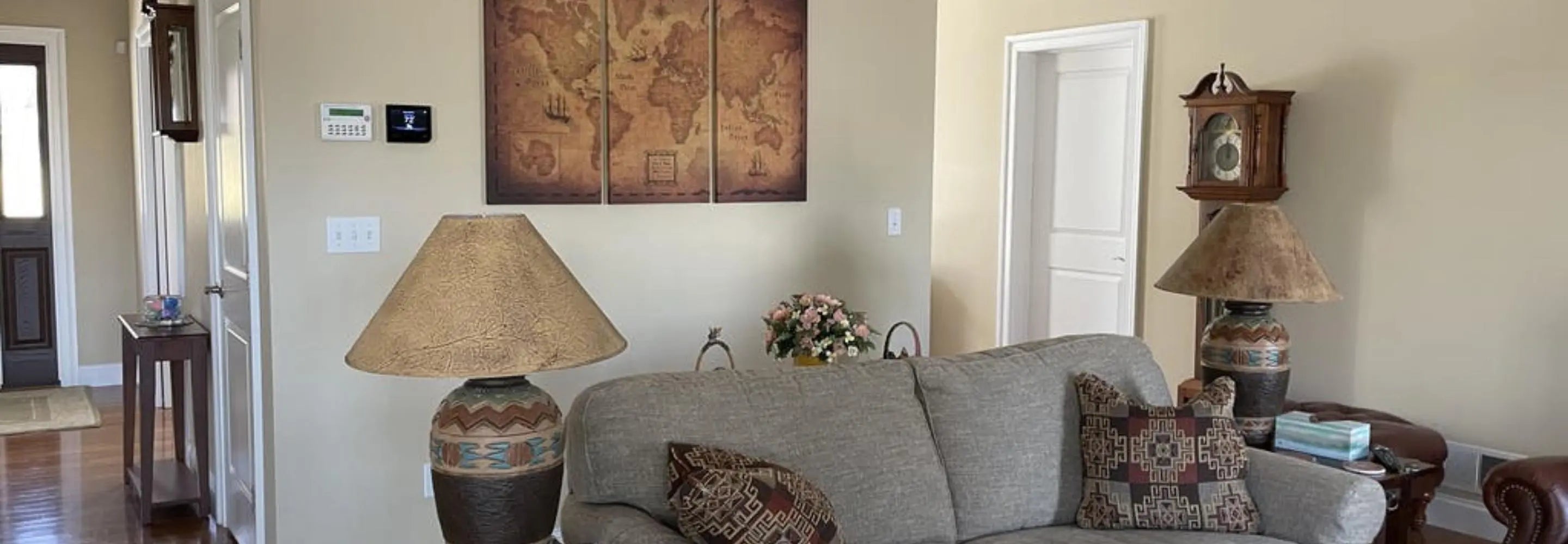The rock beneath my grip gave way with a soft crumble, sending a tiny cascade of gravel tumbling down the mountainside. My heart raced, hands trembling as I searched for a steadier hold. This wasn’t part of my plan. Standing at the base of the unmarked scramble in Rocky Mountain National Park, it had looked so inviting -- a straightforward climb to a small summit with a stunning view as the reward. Now, midway up, with no crash pad below and no clear path ahead, I wondered if I’d made a huge mistake.
But turning back wasn’t an option. I was terrified and began wishing I had chickened out when I still had the chance. But you know what felt even scarier in that moment? The idea of missing out on this unforgettable experience that was waiting right in front of me, literally between my fingertips.
With every shaky step, every careful reach, I inched closer. Scratched and sweaty, and completely out of my depth, I finally pulled myself up to the summit. And there it was: forests stretching endlessly below, mountain ranges towering in the distance, and an overwhelming rush of triumph. This view wasn’t just beautiful; it was earned.
For most of us, the idea of a “comfort zone” is relative. Maybe you’re already the type to book a solo trip, say yes to a spur-of-the-moment adventure, or tackle a tough hiking trail without a second thought. You thrive on adventure, yet even the boldest adventurers can find themselves hesitating at the edge of something truly extraordinary. That ledge -- that subtle mix of excitement and apprehension -- is where the magic happens. It’s where we discover not just new places but new parts of ourselves.
Take rock climbing, for example. When I first started, it felt like an incredible challenge to scale the brightly colored indoor walls in a cloud of chalk dust. I was hooked. But over time, what once felt bold and adventurous became my routine. The walls became predictable, the routes comfortable. So, I took my climbing outdoors, bouldering with a crash pad in tow. This felt different: uneven surfaces, unpredictable weather, and the sheer immensity of nature compared to the controlled space of a gym. Still, it was a calculated risk I felt prepared for. I was scared, but I wasn’t truly uncomfortable.
Then came moments like that mountainside scramble, which went beyond physical challenge. It pushed mental limits, forcing a confrontation with hesitation and doubt.
It made me realize something about comfort zones: they’re not static. What feels daring to me one day feels safe the next, and that’s when you know it’s time to seek a new challenge. The trick is getting myself to recognize that hesitation, that little voice saying, “What if?” and learning to turn it into my cue to leap.
If you’re someone who thrives on new experiences but sometimes finds yourself hesitating at the threshold of the extraordinary, you are not alone. Whether it’s diving with sharks, saying yes to an unplanned trip, or trying something as seemingly simple as salsa dancing with strangers, stepping into the unknown isn’t just a test of courage. It’s how we grow, how we connect, and how we create the stories that stay with us forever.
The Psychology of the Unknown: Why it's Harder to Push Further
Let’s face it -- even the boldest adventurers among us aren’t immune to hesitation. It’s not because we’re not brave enough or curious enough! It’s because our brain is wired to seek safety and predictability. It's pretty safe to say this instinct is a survival mechanism that has served humanity well for millennia, but in modern life, it can feel a bit like an overprotective parent. While it keeps us from wandering too far into danger, it can also hold us back from experiencing something truly extraordinary.
Think about it: Have you ever caught yourself saying things like, “It’s too scary,” or, “Maybe I’ll try that next time”? I have. And these thoughts aren’t just random. They’re our brain’s way of disguising fear as practicality. It’s a clever trick that can make us feel like we’re making a wise decision when, in reality, we’re letting the unknown intimidate us. Fear is sneaky like that. But what if fear wasn’t something to avoid? What if it was actually our best guide?
Here’s a game-changing idea: fear isn’t a stop sign -- it’s a compass. Those butterflies we feel in our stomach? That twinge of unease? They’re often signals that we’re standing on the edge of growth. The unknown is intimidating because it’s where transformation happens, and transformation isn’t always comfortable. But if we can reframe fear as an opportunity, the dynamic shifts. Suddenly, the things that scare us become the things worth pursuing.
Of course, diving headfirst into something terrifying isn’t always the answer. That’s where micro-challenges come in. These are small, manageable steps that push us just enough outside our comfort zone to make progress without overwhelming ourselves. Think of them as stepping stones across a river: each step builds the confidence we’ll need to leap to the next one.
Maybe you’re intrigued by the idea of snorkeling but feel uneasy about the ocean. Your first step might be trying it in shallow water with a guide. Or, let’s say you dream of solo travel but feel daunted by the logistics. A micro-challenge could be planning a short day trip to a nearby city to get used to exploring alone.
The beauty of micro-challenges is that they add up. Each small win rewires our brain to trust itself more, making the next challenge feel a little less intimidating. Over time, these seemingly minor actions create a powerful ripple effect, turning hesitation into curiosity and fear into excitement.
So the next time we feel that familiar tug of fear, pause for a moment. Ask ourselves: What’s the smallest step we can take toward this unknown? Then take it! Before we know it, we’ll be standing in a place we once thought was beyond our reach -- and realizing it’s exactly where we were meant to be.
Actionable Steps to Embracing the Extraordinary
Now that we understand why pushing past our comfort zone can be so difficult (and why it’s totally worth it!) let’s dive into the practical side of things. Here are five ways to start embracing the unknown, one step at a time.
1. Start with a Micro-Challenge
When we’re looking to push beyond our boundaries, it’s tempting to imagine some epic, life-changing experience that will instantly transform us. But here’s the truth: most breakthroughs are a series of small, intentional steps. Enter the micro-challenge.
A micro-challenge is a deliberate, bite-sized challenge that feels just outside of our current comfort zone, but is still achievable. The idea is to take a step forward, without it feeling like we’re suddenly leaping into the unknown. For example, maybe you’ve been hiking the same local trails for years but haven’t ventured farther out. Consider signing up for a guided night trek – suddenly, you’re adding an element of excitement and uncertainty, but it’s still manageable.
If you’re a certified diver, you might try underwater photography. It’s a way to explore your current passion but in a completely new context. These smaller challenges build confidence, letting us grow into bigger adventures without overwhelming ourselves.
What’s a micro-challenge you can start with? It could be as simple as trying a new hiking route, signing up for an online cooking class in a cuisine you’ve never tried before, or getting a certification in something you’ve always been curious about. Each small victory paves the way for the next, making that final leap feel more like a natural progression than a terrifying leap into the unknown.
2. Use the Power of Visualization
Visualization isn’t just for athletes; it’s an incredibly useful tool for anyone looking to step outside their comfort zone. Our brains tend to focus on obstacles: “What if it rains? What if we get lost? What if we fail?” But what if we trained our brains to focus on the reward instead?
This is where visualization comes in. Before we embark on any challenge, let’s take a few minutes to mentally picture the outcome, not the hurdles. Think about how we’ll feel standing at the top of a mountain, overlooking a view we’ve never seen before. Imagine the joy of finishing a challenging journey or the satisfaction of reaching our goal. By concentrating on the end result, we reframe the challenge from a source of fear to one of excitement and anticipation.
For example, when preparing for more difficult mountain climbs, we could have spent hours worrying about how steep the mountainside was, or whether we’d be able to make it to the top. Instead, we imagined how incredible it would feel to look out at the vast, untouched landscape from the summit. The feeling of achievement, of having gone through something challenging, was far more compelling than any fear of failure.
Visualization helps us see the challenge as a stepping stone toward something positive, not an obstacle to be avoided. It primes our minds to feel excitement rather than dread, shifting our perspective and reducing the power of fear.
3. Break It Down Into Steps
When faced with a huge challenge, it’s easy to get overwhelmed by the sheer magnitude of what lies ahead. But the secret to conquering something daunting is to break it down into smaller, more manageable steps.
This method applies to just about anything. Want to run a marathon? Start with short runs, then gradually increase the distance. Looking to travel to a foreign country alone for the first time? Begin by taking weekend solo trips to domestic towns or cities, slowly building your confidence with exploring on your own.
By breaking down a big challenge into smaller, digestible parts, we make the whole experience far less intimidating. And each time we conquer a smaller step, our comfort zone expands little by little, building momentum that will help us push further to the next big thing on our list.
4. Lean on a Trusted Guide or Community
No one is expected to go at it alone, especially when trying something that feels truly out of our comfort zone. The power of community and mentorship is huge when it comes to conquering fear. Whether it’s a seasoned mentor, a fellow adventurer, or a supportive community, finding people to encourage us makes all the difference.
When we were preparing for the mountain climb, we wouldn’t have had the courage to attempt it without our climbing partner by our side. His calm demeanor and quiet encouragement helped us keep climbing when we thought we surely couldn’t grab the very next hold. Having someone to share the experience with, especially someone who has done it before, creates a sense of shared purpose and reduces the anxiety that comes with trying something unknown.
If we can’t find someone physically present to guide us, let’s look for a community of like-minded individuals. Whether it’s a local climbing club, a hiking group, or (especially!) Compass Club, surrounding ourselves with people who understand the journey can give us that extra bit of confidence. We don’t need to tackle the extraordinary by ourselves; there’s strength in numbers.
5. Make Failure Part of the Story
Here’s a reality check: we will fail at some point. It might be a small mistake, a slip-up, or even a full-on setback. But rather than seeing failure as a negative, let’s reframe it as part of the adventure.
Take it from us: we were once hiking and scrambling in a metropark we hadn’t explored before and somehow got horribly off-trail. As night started to set in, we began frantically trying to backtrack our steps. We slipped, got scratched by bushes, and even took a wrong turn that put us on a logging trail leading us out of the woods about a mile down the winding road from the parking lot. The park rangers were standing around our car when we got back and told us they were preparing to search for us!
At the time, it felt so frustrating – we were exploring somewhere new that we felt was in our skill level, and we totally messed up our fantasy of our ideal afternoon scrambling at the metropark. But now, we look back at that memory fondly, in a way. Those little mishaps were a big learning experience for us and part of what made our adventure that day real, raw, and memorable.
The perfect journey simply doesn’t exist. What’s far more important is how we approach the challenges along the way. Let’s embrace failure as a learning opportunity, and remember: it’s part of the narrative that makes our story unique. We’ll be more interesting adventurers for having fallen, learned, and risen again.
From Fear to Freedom
At the end of the day, what lies beyond our comfort zone isn’t just another destination -- it’s an experience that will shape who we are. The unknown is where stories are made, where memories are forged, and where we unlock versions of ourselves we never knew existed. It’s not just about visiting a new place or learning a new skill; it’s about discovering the deeper layers of our own strength, resilience, and potential.
Sure, it might not always be glamorous. We might trip, fall, or mess up along the way. But that’s the beauty of it. Every misstep, every bump, every uncertain moment adds to your growth. The process of embracing the unknown is where the magic happens, whether it’s through traveling to unfamiliar places, learning something new, or just saying “yes” to the things that scare us. It’s where we challenge what we thought we knew about ourselves and expand our world in ways that go beyond simple geography.
When we take that leap, it’s not about the adrenaline rush. It’s not about simply checking off an item on your bucket list. It’s about the transformation that comes from pushing your boundaries. It’s about returning from that trip or challenge or experience and seeing the world, and yourself, with new eyes. It’s about recognizing that you have the courage to face what feels uncomfortable and emerge stronger, more confident, and ready to take on whatever comes next.
So, when that voice of doubt creeps in, when we start to second-guess ourselves or feel the pull of staying in the safety of the familiar, we must remember this: growth lies beyond that fear. The magic, the transformation, the real rewards of living an extraordinary life, happen when we step into the unknown.
The next time you feel that fear rise, don’t turn away from it. Embrace it. Lean into it. Because beyond that discomfort lies the adventure, the confidence, and the stories that will shape you into the person you’re destined to become. On the other side of fear, there’s freedom to be more than you ever thought possible. So what’s your next move? Your extraordinary journey is waiting, and it’s closer than you think.









Share: